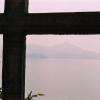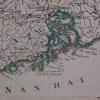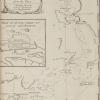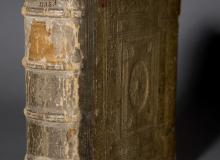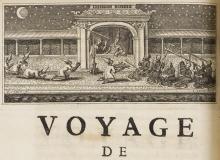Shangchuan
Shangchuan Island can look a small and rather insignificant place on a map. Certainly there appears no real reason why it proceeded to be singled out in major maps and atlases of China throughout the sixteenth, seventeenth and eighteenth centuries. Not surprisingly, the reason is rather simple.
First, it is important to view Shangchuan Island in its geographical and then its historical context. Located off the southern coast of China, the island of Shangchuan is actually part of a small three-island archipelago, with the other larger island known as Xiachuan Island. These are conveniently close enough to the coast to guarantee connection but also possess a number of bays, and a long coastline facing away to the south, that make the islands also a little secluded from the mainland.
Thus, during the late Ming dynasty when China rigorously protected its borders and strictly regulated the trade that could take place with foreign nations, these close offshore islands were ideal locations for smuggling and black market trading. Portuguese sailors had entered this part of the world in the early 1500s and were keen to trade with the Chinese. Even though there was an annual fair in Guangzhou, the Portuguese wanted greater access to Chinese markets. Chinese merchants who were prepared to engage in illegal trade with them thus met them at Shangchuan Island.
During the trading season (which depended upon the seasonal winds) small huts were established there and a kind of temporary settlement sprang up each year. In 1552 Francis Xavier came to this island from Goa in an attempt to gain passage with a vessel returning to the Chinese mainland. This was not to be, he fell ill and thus he died waiting to gain entry to China. This death was significant for the church and for missionaries because of Xavier’s reputation as the missionary without equal. Subsequently, although trade was re-opened with China in a legal sense, and permanent settlements were established at Macau and greater access was granted to Guangzhou (and even other ports), the fact that Shangchuan was now a holy site kept it marked and highlighted on contemporary maps. Other missionaries also tried to stop here and pray if they could, as reported by Joachim Bouvet in 1699 for example, almost a century and a half after Xavier’s death.
